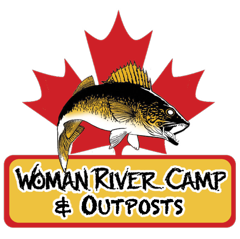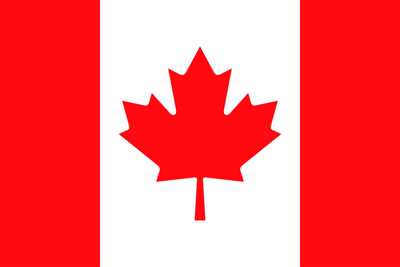Before heading out on your first fishing trip of the year, take the time to complete a springtime tune up. Fishing gear, boat, trailer and all your outdoor equipment should be given the once over during the tuneup. Don’t be that person who loses a trophy fish because of old line. Don’t be that guy broke down on Highway 502 with a burnt bearing on their trailer. Take the time for and enjoy a springtime tune up. You will appreciate it in the wallet and more quality time on the water!
Rods and Reels
- Change your fishing line on all the reels you plan on using. Be sure to drop off your used line for recycling. Don’t just throw it in the trash. Garbage picking birds sometimes use it in their nests and it can lead to strangling young birds. I go with 6-8lbs test for walleye and 10-14lbs for Northern Pike and Lake Trout. Go with 8lb test for an all around rod and reel. There are some excellent braid lines out there that will do a great job in all situations.
- Be sure your drags and bail springs are working properly. I loosen the drag on all my reels at the end of each fishing day. This helps extend the drag’s life. Remember to reset it before your first cast the next day!
- Make sure your reel is lubed (don’t over grease) and there are no nicks on the spools or bails to damage your line. The simplest thing to do is take it in to a repair shop and let them clean it. No surprises when you are on the Woman River Chain with a trophy fish on the end of your line!
- Check over your rods for cracks and be sure to check the eyelets for damage. Use a piece of old nylon pantyhose to run through each eyelet to see if there are any snags. Use a very fine piece of sandpaper to remove the snags. The same goes for the nicks on your spools.
- If you need to replace a rod or reel, be sure they balance well together. Reels have a smooth drag and instant anti-reverse. Spend a little extra on the rod and go for a one-piece rod with the rod extending all the way to the butt of the handle for the best sensitivity. Fishing rods these days can be technique specific. Be sure you choose properly.
Tackle
- Check your terminal tackle like snap swivels, floats, weights and leaders. Do you have enough?
- Go over each lure and clean old line off the eyelets, replace or sharpen hooks and inspect snap rings. Be sure the barbs on the treble hooks are bent over.
- Spinner bait skirts in good shape.
- Plenty of jigs in sizes and colours.
- Tackle boxes themselves in good shape.
- Did you buy that new lucky lure? Now is the time to bend over the barbs on the treble hooks.
- Is your Ontario Outdoor Card in our tackle box? Do you have your boater safety card?

Springtime Tune Up for Boat and Accessories
- Check for leaks.
- Good drain plug.
- Batteries topped up with distilled water (even maintenance free batteries can have water evaporate)
- Charge all batteries and then check their voltage a week later and see if they are holding a charge.
- Electric trolling motors in good shape and have no line under the prop.
- Bilge pump works and the impeller is clean. Our bilges seem to need to be freed up by spinning the impeller before turning the power on. Otherwise we always blow a fuse.
- Marker lights work.
- Life jackets and throw cushions are in good shape. A life jacket with a rip is no longer usable.
- Safety kit is stocked with a waterproof flashlight, 50ft floating throw rope, pea less whistle, and a bailer (container for all). Be sure to check regulations for each different size watercraft at the Office of Boating Safety
- Paddles and good catch and release rubber net are in the boat and in good shape. (we don’t allow nylon nets at Woman River Camp & Outposts)
- Fish measuring device in the boat.
- Anchor and rope.
- Hinges and storage areas all in good shape.
- Livewell pump and drain working properly.
- Boat cover, transom tie-downs all in good shape.
- Steering and throttle linkage working properly.
- Fish finder and transducers working properly
Outboard Motor
- Change or at least check spark plugs for proper gap. Remember new plugs still need proper gap.
- Change oil and filter in four stroke motors. Spend the money and use the manufacturer’s oil. Auto engine oil is not designed for hi RPMs that an outboard produces. Synthetic is the way to go.
Lubricate linkages and grease proper locations. Refer to owner’s manual.
- Change lower unit oil. If it is milky, have the lower unit pressure checked and repair accordingly.
- Check over the prop and have repaired if all blades are not the same size or bent out of shape.
- Remove fishing line from around the prop shaft. Fishing line and unbalanced props lead to seals leaking causing water to mix with lower unit oil and premature failure of a lower unit. Cheaper to remove the fishing line when it gets tangled in your prop or to fix the prop than to repair a lower unit.
- Does your kill switch work.
- All electrical is working and charging.
- Do you have a spare prop.
- Does your water pump work? You must tank test or put your boat in a body of water to test this. Do not use a pair of water muffs. They will force water through your engine and give you a false sense that your water pump is working properly.
- Fresh fuel in your tank? Fuel these days with ethanol absorbs water. Keep ethanol content under 10%. For the minimal amount of fuel you put in your outboard, add a stabilizer or SeaFoam.
- Check over fuel lines and wiring to ensure there are no cracks or shorts.
- Take your boat for a good long test run, wide open and trolling to be sure the carburetor is clean and the motor is running properly.
Trailer
- Inspect metal and U bolts for cracks. Scrape the old paint off and have a closer look.
- Suspension is not fatigued or broken.
- Lights all work to the vehicle you are towing with. Remember the number one trouble spot with lights is usually the white ground wire.
- Check wheel bearings and seals. I recommend “bearing buddies” but you should still check the bearings annually for pitting and wear.
- Inspect tires for broken belts or severe cracks.
- Check tire pressure, including the spare.
- Check all wheel lugs and be sure to have a jack and proper wrench to change a tire. Be sure to spin the wheel lugs off so you know they are not rusted on. It sucks to be on the side of the road with a flat in the rain and rusted on wheel lugs.
- Transom saver working properly.
- Trailer leg and latching mechanism functioning properly. If you have a removable leg, remove it for traveling instead of tilting. It will last much longer.
- Tie down straps in good shape.
- Safety chains are in good shape and the proper length.
- I see lots of guests use their boat trailers to haul extra gear and food. A great idea. It is always cheaper to tow a trailer and pile the people in one vehicle instead of driving two vehicles. Just remember to make sure the trailer is rated for the extra weight. Don’t ever try and haul a trailer with a vehicle that is too small for the job. You are always best to put as much gear in/on the vehicle and not the trailer.
Vehicle
Be sure the vehicle you are going to tow with has its maintenance up to date. Oil change, good tires, spare tire comes down. Remember to check proper tire inflation. Saves you on mileage!!!
This checklist can be performed by you or have a professional go over things. I know myself, I will save some money and do most myself but when it comes to bait casting reels, I leave it to the professionals.
Go fishing and test it all out. It is a real bummer to haul your equipment all the way to Canada and have it malfunction. Preventative maintenance is the first step in having a successful fishing trip!
Let me know if I missed anything.
Have fun and be safe on the water.
Moss






